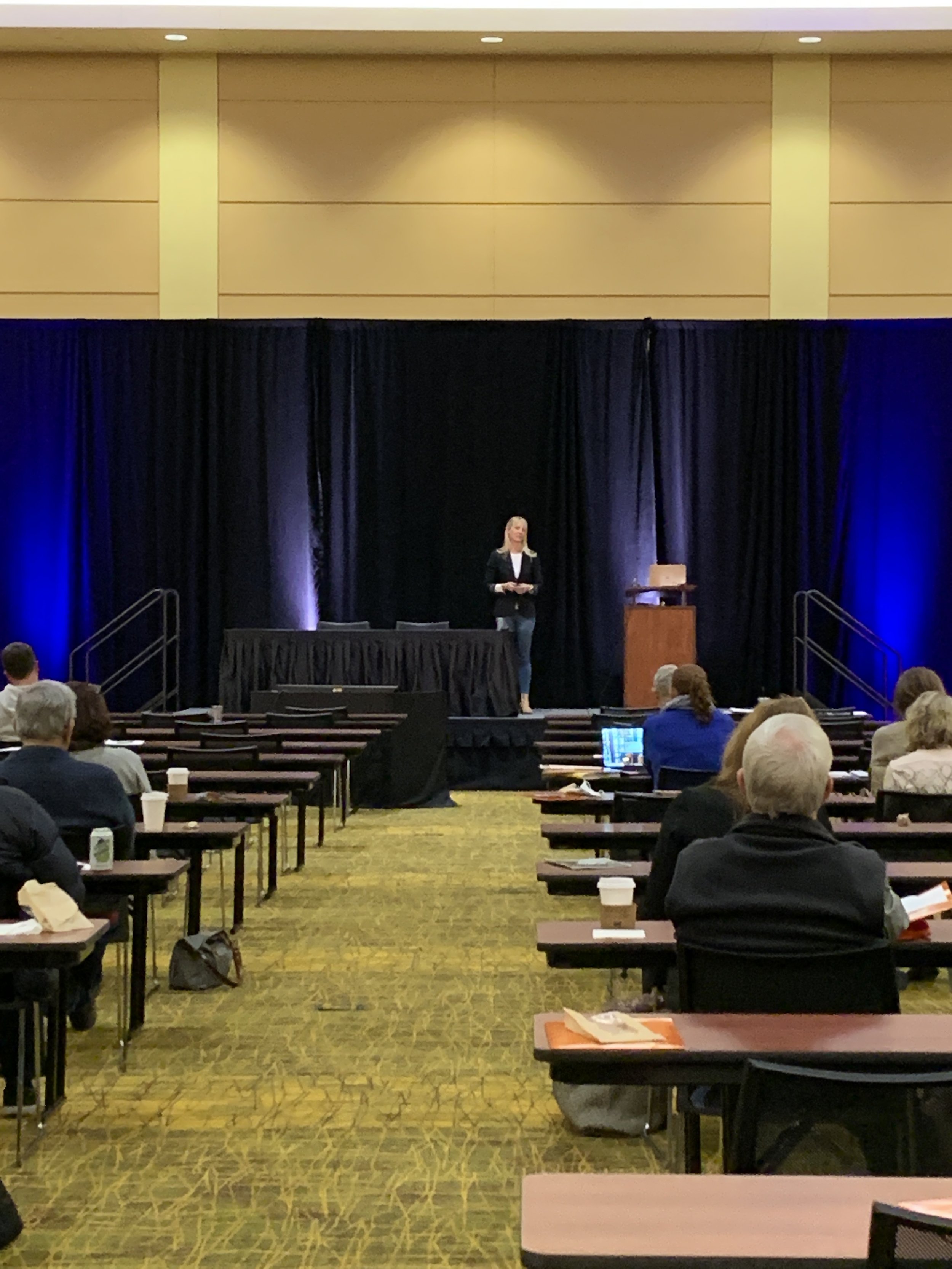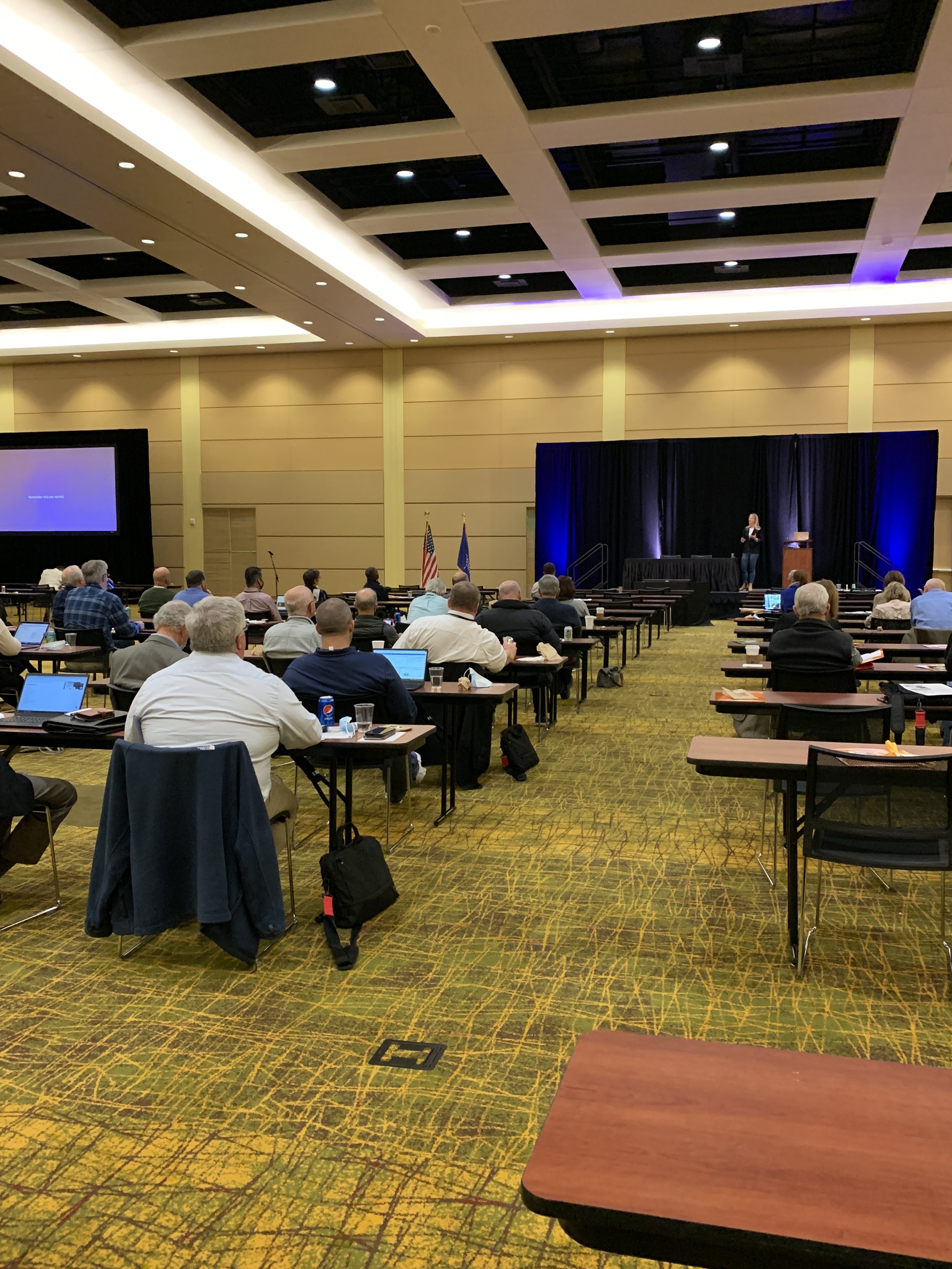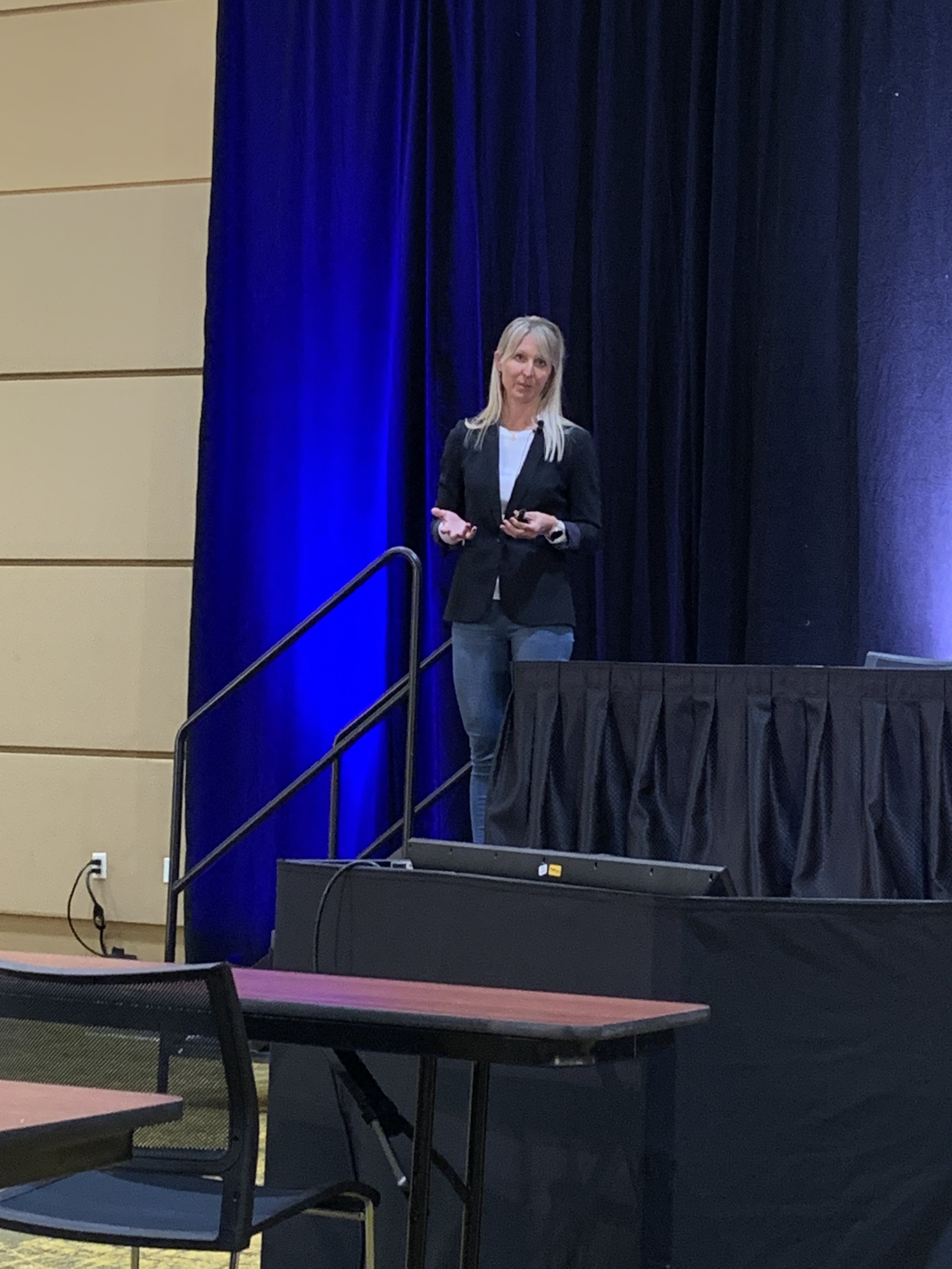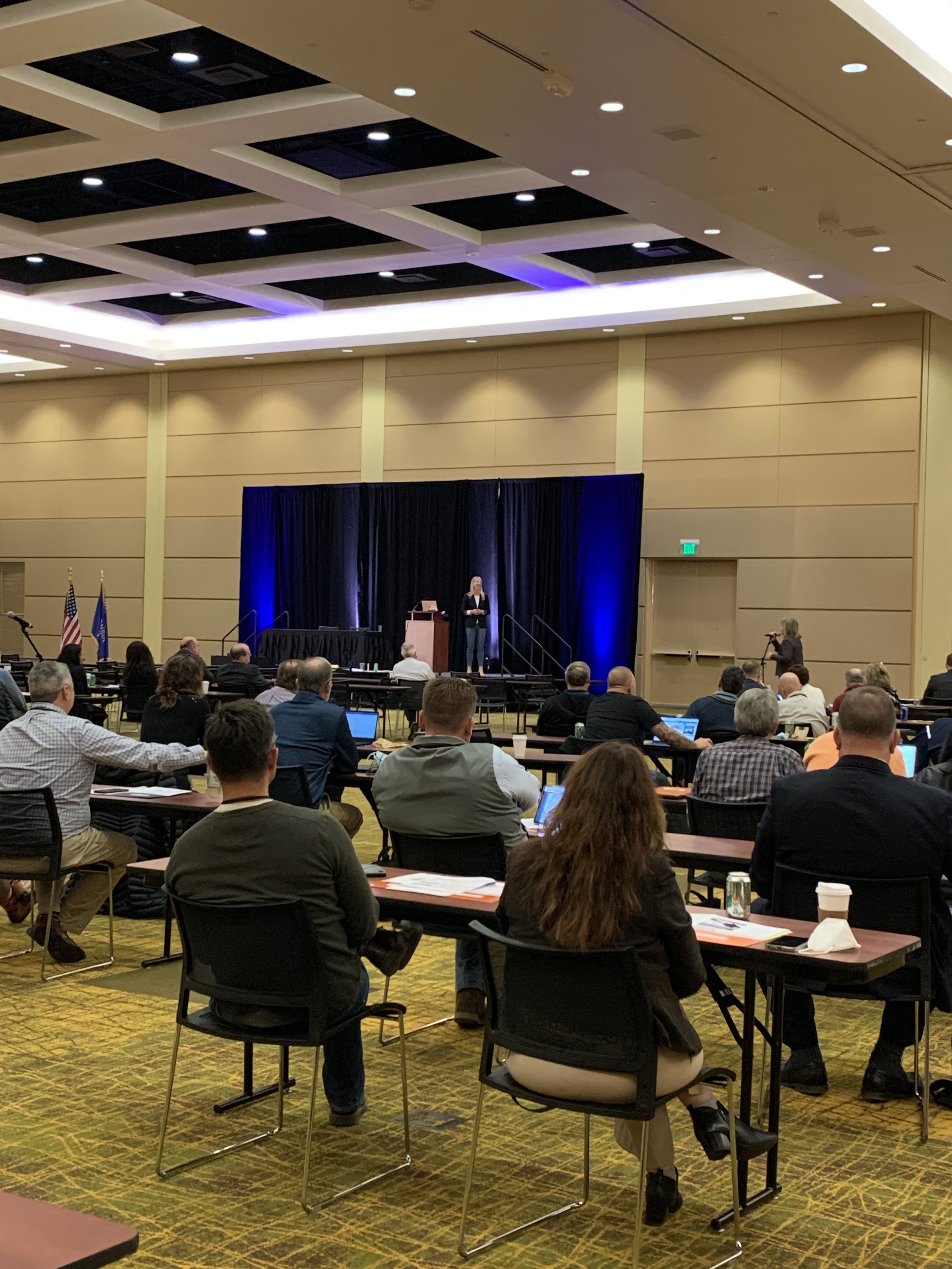Having a Therapist and a Coach Changed My Life (and It Could Change Yours, Too)
Having a Therapist and a Coach Changed My Life (and It Could Change Yours, Too)
By Megan Hottman
When my marriage failed after 12 years in 2015, my world fell apart. I went into a deep funk, feeling rudderless and confused. I sensed I needed help but didn’t know where to turn. I was getting my hair done one especially bad day when my hairdresser recommended her therapist to me. It was my first foray into therapy and it saved me; therapy has been a blessing and a gift to me ever since, and I still see that same therapist (Donna Parker) to this day.
Therapy helped me make sense of some of my traits, tendencies, and triggers. I realized that like a lot of litigators and personal injury lawyers, I was vicariously feeling the trauma to which I was exposed in my clients’ cases. It was devouring me. Secondary trauma (also known as compassion fatigue) is real; it can manifest like PTSD and shares many of the same symptoms as burnout.
I really appreciate this Tend article’s[1] discussion of “developing a warning system” for Compassion Fatigue/Secondary Trauma Syndrome:
Say that you were to learn to identify your CF/STS symptoms on a scale of 1 to 10 (10 being the worst you have ever felt about your work/compassion/energy, and 1 being the best that you have ever felt).
Then, you learn to identify what an 8 or a 9 looks like for you i.e. “when I’m getting up to an 8, I notice it because I don’t return phone calls, think about calling in sick a lot and can’t watch any violence on TV” or “I know that I’m moving towards a 7 when I turn down my best friend’s invitation to go out for dinner because I’m too drained to talk to someone else, and when I stop exercising.”
Being able to recognize that your level of CF/STS is creeping up to the red zone is the most effective way to implement strategies immediately before things get worse.
But look back to what also emerges in this process: you are starting to identify the solutions to your depletion.
If I know that I am getting close to an 8, I may not take on new clients with a trauma history, I may take a day off a week, or I may return to see my own therapist.
One of my personal warning signs is when I don’t want to talk with strangers. Usually I love engaging with people like Uber drivers, cashiers at the grocery store, and other people at the gym – I really enjoy spontaneous conversation and connecting randomly with strangers. I always learn something new. But when I’m mentally and emotionally fried, I go into energy-preservation mode and don’t want to talk or even wave or make eye contact with anyone. I feel myself saying, “This limited energy I have is mine; don’t take any from me.” When I feel this happening I know it’s time to get some extra rest, clear some space on my calendar, and say “no” to requests.
In our profession, where working long hours, managing massive stress, and shouldering the weight of our clients’ horrific events which led to their case (and our involvement in their lives) are commonplace, we must keep an eye out for the manifestation of symptoms and seek help when we recognize them.
According to a 2016 study by the Betty Ford Center,[2] “When focusing solely on the volume and frequency of alcohol consumed, more than one in three practicing attorneys are problem drinkers.” The study compared attorneys with other professionals, including doctors, and determined that lawyers experience alcohol use disorders at a far higher rate than other professional populations, as well as mental health distress that is more significant.
To me, that’s a clear indicator that we’re not managing our stress, our own trauma, or our clients’ trauma very well. Therapy can provide a way to unpack those things and develop and maintain healthy boundaries with the trauma to which we are exposed in our work. It provides a safe space for us to offload some of the trauma, grief, and anxiety of our work before we bottle up too much of it and it devours us from the inside. The body keeps score, as they say. We must process and work through these things; stuffing them down only leads to mental and physical breakdowns. The best lawyers are healthy lawyers.
I could go on about the benefits of therapy and how I wish it was mandatory for everyone -- especially lawyers -- but I’ll stop here. Suffice it to say, I highly recommend it and hope you find your own “Donna.” If you don’t jive with the first therapist or counselor you see, don’t give up! Try several until you find one that’s a good fit for you.
After my successful foray with therapy, I went on to try coaching. What’s the difference between therapy and coaching? Therapists are usually focused on the past and present. They manage mental illnesses, can diagnose disorders, and are clinically and formally trained and educated. Coaches, on the other hand, are usually future-oriented; if their work veers into the mental-health space, they will refer clients to therapy. There are certifications and schools to become a coach but formal certification is not required. I don’t even know if the coaches I’ve worked with have any courses or certs under their belts; it didn’t matter to me because the work we did was so inspiring and effective.
My first experience with a coach was in 2018. I’d joined Wealth Factory, a group in Salt Lake City focused on entrepreneurs like myself. I found it through Entrepreneur’s Organization, a group I’d joined in 2015 to be around other like-minded business owners (most of whom were not in law, which was refreshing). Wealth Factory’s goal was to replicate the “home office” for business owners: the CPA, tax strategist, lawyer, financial planner, coach, and more, all under one roof and collaborating for the business owner’s best interests. In this membership I was paired with Demi, my “Soul Purpose” coach.
The work Demi and I did was life-altering in a way that therapy hadn’t been and wasn’t intended to be – it focused on my dreams and desires in business and in life, future visions of myself and my life, getting clear on my mission, vision and values, and so much more[3]. Demi and I worked together for several years and through my work with her I joined a women’s mastermind that she led, consisting of other women business owners.
In Demi’s mastermind group was a woman named Shelley Paxton, badass and former-CMO for Harley Davidson. (Shelley is the author of a book called Soulbbatical, which I highly recommend.) About the time I was wrapping up my coaching with Demi (with coaching it’s not uncommon to reach a place of completion and then seek out a new coach with fresh ideas and methods), Shelley reached out and asked to coach me. I’ve always wanted to write a book/memoir and felt she’d be a great guide. We began working together and with her I was able to take things I’d learned from Donna and Demi and take them even further. Shelley connected me to an Enneagram coach and with his help I did a deep dive into my Enneagram type. (Do this if you haven’t!)
Shelley and I eventually felt complete and I pivoted back to Demi, who was in a season of “breakdown to breakthrough.” That message really landed with me during the pandemic. I include this here to remind readers that switching coaches is totally normal, as is returning to a former coach in a different season of life, if that’s what calls to you. It’s worth noting also that during those years of coaching, I was continuing with therapy. They fill different buckets and the sessions are completely different.
With Demi and Shelley’s help I began to have a different relationship with work and social media. I let down some walls and stopped trying to differentiate between “Megan the lawyer” and “Megan the human.” Turns out, the more I shared of my actual and vulnerable self, the more clients of the type I wanted to serve were attracted to my firm -- and the more I repelled those clients who were not a good fit for me. It became more fun to do the work when I got to serve more clients with whom I was in alignment. I also began to honor myself more. I strengthened my boundaries and stopped feeling badly for working the hours that were best for me; I also didn’t apologize for working on the road in my camper van starting in late 2020.
So many good things came of those coaching sessions during COVID-19, including the outline for my book and other wonderful insights and breakthroughs. One exercise that I found pivotal was getting clear on my top-three core values. They may change in different seasons of life, but figuring them out and then using them as a lens to make decisions has been huge for me. When life feels like it’s “off-track” or when I feel I’m lacking a compass, I turn to my core values to help decide the next right thing. For me, my core values were (and are): health, authenticity, and connection. Keep in mind that my total list of values is long and there are many on that list that I love -- like “making a difference” and “being successful” -- but after narrowing the list from 15 to 10 to five to just three, it helped me clarify my guideposts for life.
For the past couple years I’ve been coaching clients myself and love it. My clients have all been lawyers, most of whom own their own firm or are solo practitioners. We work on designing their best lives -- from their schedule, to their caseload, to their client selection, to their staff. We work on time-boxing emails to take back control of that monster and we talk about guardrails in areas where lawyers tend to self-sabotage (i.e. meeting with clients and then taking their case on when they know it’s not a good case or good fit). We brainstorm ways outside of lawyering to earn side-hustle money in a way that excites them, or ways to fit in exercise and time with family and kids. We think outside the box, break out of the lawyerly “norms,” and it’s wonderful to see the results. I love doing the work with them and helping them stay accountable to themselves.
Some things I love most about being coached and being a coach: I love someone being fully in my corner when I am the client. I also love the accountability from an outsider –someone with no skin in the game who wants to see me succeed and nail my goals. I love being called out on my bullshit when I’m trying to kid myself or talk myself in or out of something that isn’t going to serve me. I love having check-ins where I know my audience isn’t going to try and fix my problems or me but is going to listen and then ask insightful questions. There are not many relationships in our lives where this is the case; often our partner or friends want to fix us or are not objective in their advice because they are so biased in our favor. Neighbors and co-workers can’t really be asked to drop in and get deep. Sometimes we don’t want to share our struggles with our closest people. It helps to have that special coaching relationship for just these reasons. It’s easy for us all to get lost in the weeds of life – the to-do lists, emails, house chores, work tasks, etc. A coach helps me stay on track with my big-picture plans and dreams. They make sure we aren’t putting ourselves last on our lists.
I highly recommend to everyone I meet, and especially lawyers, that they have a therapist and a coach, whom they meet with regularly. Please know this: You’re worth it.
Demi’s “I stand for” statement for Megan:
I stand for wholesome living. I believe that wholesome living is living the way we were intended to; aligned with nature.
I believe the rhythms in nature exist within us also and we function best when we are in alignment with these rhythms.
I believe our Western world in all its modern conveniences has gotten too far out of sync with these rhythms. We eat engineered food, drive isolated in our cars, and work in our cubicles, sitting for long periods of time. We shop and socialize online.
We sacrifice our sleep and make the time for our self-care negotiable. We take on so much that when we are connecting with others, our minds are half busy with what is or isn’t checked off our to do lists that we miss out on too many opportunities to truly connect.
Nature doesn’t multitask, it doesn’t induce the birth of its animals, and there is no expectation to hurry the bloom of a flower. It goes at the pace the journey merits.
I believe we are meant to eat real food, grown from clean dirt, we are meant to have sunshine on our face while we move our bodies, running, dancing, biking, swimming, and sometimes getting down and dirty doing hard work, allowing our bodies to rest really well at night.
I believe Willa Cather says it well… “Miracles rest not so much in miraculous forces coming to us suddenly from afar, but rather in our perception being made finer so that our eyes can see, our ears and hear (and our heart can feel) what has been there always.” ~Willa Cather
I believe that when we slow down our lives to the pace that nature intended, we experience the miracles that have been there always.
I believe we all have a purpose with unique gifts we are here to contribute. I also believe that the development of our gifts and the discovery of our purpose can’t happen when life is moving so fast.
It comes from simplicity, slowing down and connecting to our Soul Sustenance.
When we do this, the path towards our greatness occurs as surely as the flowers bloom, the seasons change and the sun and the stars take their stage.
We are destined for greatness; it is the rhythm of our nature.
I believe that wholesome living is not a privilege but a choice.
I dream of a world in which all beings reclaimed their power, making the choices that restored them to their wholesome state, replacing resignation with resilience, refusing to rush and no longer celebrating our ability to multitask but rather use it as a signal to let something go.
I believe we can all say no to more to make space for the things that really matter to us.
I dream of a world that slowed down so much we heard more birds singing, saw more sunrises and sunsets, we knew more of the people who grew our food, and made more close friends from interacting with strangers at the grocery store.
I dream of a world where people lived their lives from a place of truth and love rather than scarcity and fear, where they trusted the guidance of their Soul to enjoy a life filled with magic, miracles, deep meaningful connections enjoying the sweet privilege of contributing their greatness to the world in a way in which only they can.
If you’d like to contact any of the people I’ve mentioned in this article, please do. This wasn’t an attempt to solicit business on their behalf but I did feel called to share their names and my thanks to them for the indelible imprints they’ve left on my life and me.
Donna Parker: LinkedIn : https://www.linkedin.com/in/donna-parker-8234a72b/
Here is a podcast interview I did with her:
https://www.maximumenthusiasm.com/e-23-donna-parker-know-your-true-values-and-highest-priorities
Demi McConkie:
https://www.theauthenticleaderinyou.com/about
Here is a podcast interview I did with her:
https://www.maximumenthusiasm.com/ep-16-demi-mcconkie-soul-purpose
Shelley Paxton: https://www.shelleypaxton.com/ (includes link to her book)
Here is a podcast interview I did with her:
https://www.maximumenthusiasm.com/shelley-paxton
My coaching website: https://www.meganhottman.com/coaching
I’d be happy to sit down and spend an hour or so with you by phone or by video to discuss your goals and what you might like to pursue with a coach, whether it’s me or someone else. Sometimes just giving ourselves permission to have that first conversation and explore what is possible is the tipping point towards something exceptional. I urge you to lean in and see where it takes you.
About the author:
Megan M. Hottman, attorney and founder of Hottman Law Office in Golden, Colorado (Est. 2010), specializes in representing injured bicyclists and is a recognized expert and advocate in the cycling community. Known as THECyclist-Lawyer.com, Megan has represented over 170 individual cyclists and handles cases nationwide. Megan provides bike law education clinics and classes to cyclists, local bike clubs, and law enforcement personnel. She’s known by cyclists and attorneys nationwide as the cycling case expert and frequently consults with other attorneys on their cycling cases.
Megan was featured for her work in cycling cases by both Outside Magazine and HBO Real Sports (Bryant Gumbel) in 2015. She has authored countless articles and also co-authored a cycling-law resource book called Bicycle Accidents, Crashes & Collisions: Biomechanical, Engineering, and Legal Aspects (you can find it on Amazon). In late 2022/early 2023, a global bike documentary titled “The Engine Inside” will be released by Anthill Films, in which Megan is one of the featured cyclist stories.
A former-elite road and track cyclist for many years, Megan went on to compete in cyclocross and gravel races before dabbling in triathlon, completing three Ironman events 2015-2017. These days she enjoys mountain biking, bike packing, gravel racing, endurance running, and self-paced endeavors like riding the White Rim in a day or biking with her dogs from Golden to Colorado Springs. She commutes almost everywhere by bike and incorporates some aspect of health, wellness, or sport into every day. Sitting is the new smoking, she frequently says, and #ridemoredriveless is her mantra.
In 2018 she reached her goal of riding 10,000 bike miles in one year, and in 2019 she led a group of 25 cyclists in breaking the World Record for “longest static cycling class” while raising money for People for Bikes. 2020 brought about a much-needed mental and physical reset from racing given the pandemic; during that time she bought a camper van and commenced #vanlife, literally #WFA (working from anywhere).
As of late 2022, after being hit by a car while on her bike on 6/5/22, Megan is working on her second book and loves working with her coaching clients and doing frequent public speaking. Megan coaches other lawyers and helps them live lives by design, on purpose, with HELL YES as a guiding principle. She also loves being on stage delivering speeches to large audiences and her topics range from law to health to substance abuse and more.
You can listen to her on her podcast, MaximumEnthusiasm.com, follow her vanlife and cycling adventures on Instagram @meganhottman, @cyclist_lawyer, or visit her website MeganHottman.com to learn more.
**And huge thanks to fellow lawyer and grammar-king Tom Simon, of McCormick, Fitzpatrick, Kasper & Burchard, P.C., for his proofreading and editing help here!
[1] https://www.tendacademy.ca/warning-signs-of-vicarious-traumasecondary-traumatic-stress-and-compassion-fatigue/
[2] https://www.hazeldenbettyford.org/about-us/news-media/press-release/2016-aba-hazelden-release-first-study-attorney-substance-use
[3] At the end of this article I include a statement called “I stand for” that Demi wrote for me after a focused session together in which she elicited those sentiments from me and then gave them structure for me to see. It’s powerful and beautiful; she pulled things out of me that I couldn’t see for myself and gave me words to use. I refer to it often and in addition to my core values, it helps me navigate the crazy waters of life.
*this article appeared/will appear in CTLA’s Trial Talk magazine.




